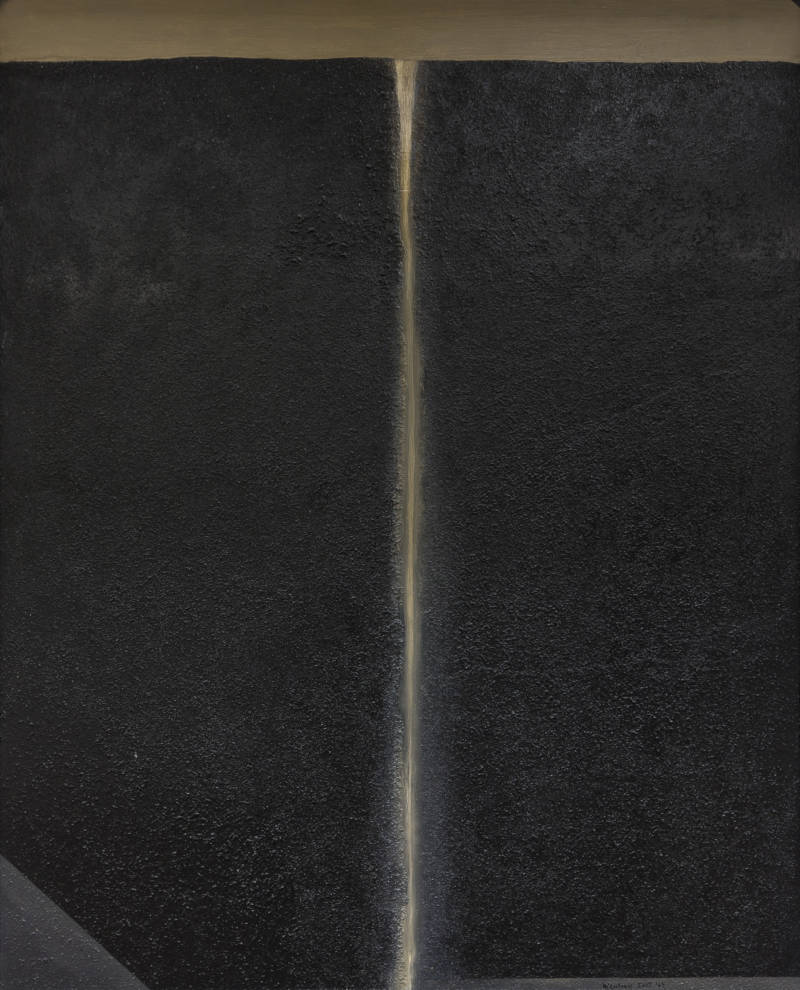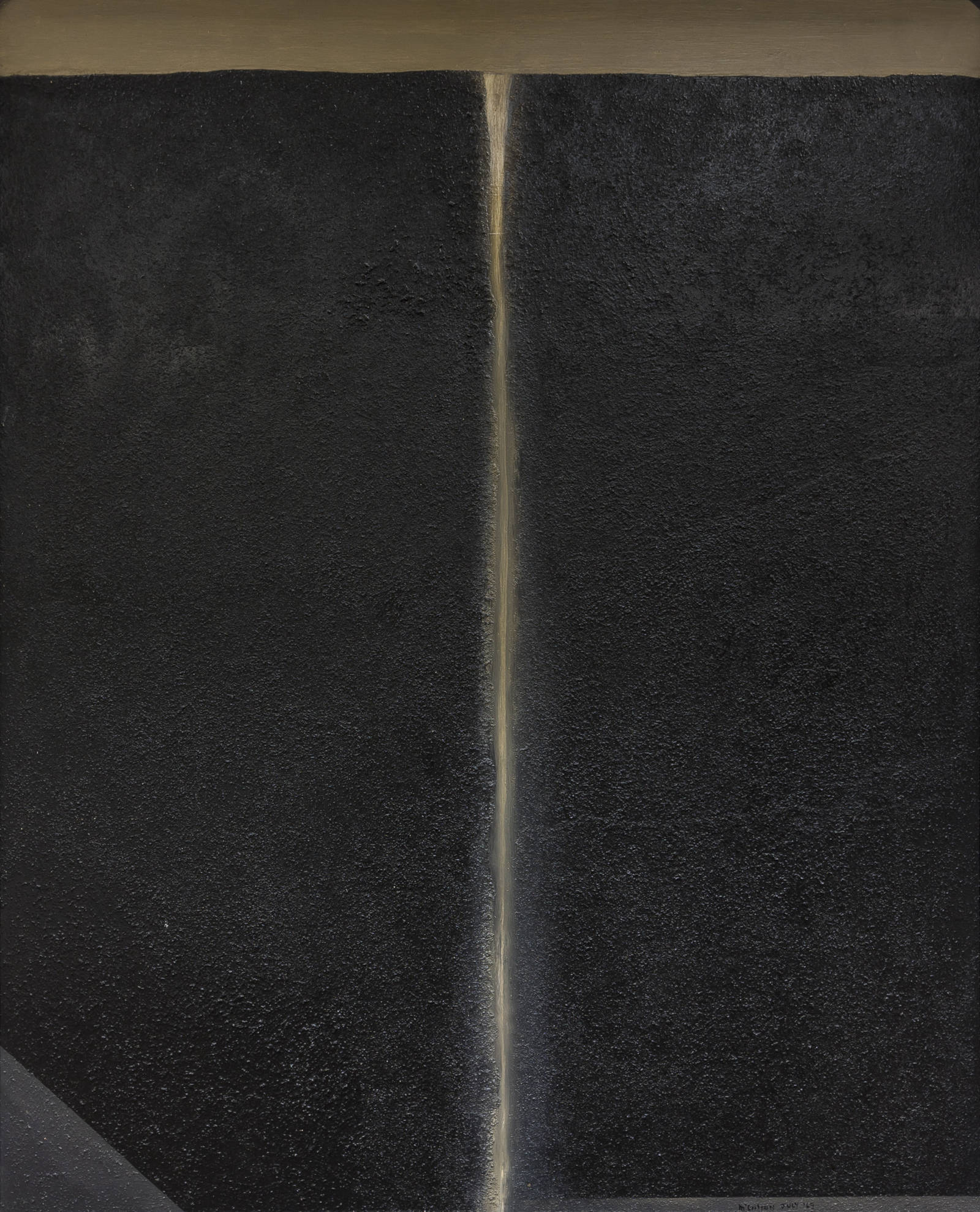MCCAHON, Colin;
July Waterfall
July 1965
PVA and sand on board
1490 x 1190mm

cm000376 on the Colin McCahon Online Catalogue.
In 1959, ten paintings by William Hodges were loaned by the Admiralty in the United Kingdom to the Department of Internal Affairs in New Zealand for an exhibition. When this was complete, the works were temporarily stored at the Alexander Turnbull Library while awaiting their return to London. Arrangements were made for some of the Hodges paintings to be transferred to the Auckland City Art Gallery (later Auckland Art Gallery Toi o Tāmaki) for inclusion in an exhibition called Captain James Cook: His Artists and Draughtsmen.
During this exhibition, Colin McCahon, who was employed at the gallery, studied Hodges’ paintings. Hodges’ depictions of waterfalls became the genesis of a major series of Waterfall paintings by McCahon. In the catalogue for Colin McCahon: a survey exhibition, the artist wrote, ‘The waterfalls started flowing in 1964 and there were hundreds of them. … Hodges and I eventually realised we were friends over the years and got talking about his painting. He was dead and I was about the same. We conversed, through paint (about Naples yellow to start with)—and in 1964 I painted my first waterfall.’[1]
McCahon’s Waterfall works tend to centre on bright arcs or columns of falling water. Compared with the romantic disorder of Hodges’ works, McCahon’s are ordered and altogether more tranquil, although dramatic in their juxtaposition of light and dark. McCahon acknowledged that the Fairy Falls in the Waitākere Ranges and Japanese and Chinese paintings provided further inspiration. So did the paintings of Buster Black, which typically took the form of nightscapes. Black is known for using sand to add texture to his paint, as McCahon does in July Waterfall.
Ron O’Reilly described McCahon’s Waterfall paintings as ‘a sort of symbolic signwriting’.[2] Light can be viewed as a guiding force through the darkness, and the pouring water as the power that nourishes spiritual life. Real-world elements are so reduced as to almost completely lose their naturalistic significance, becoming instead diagrammatic design elements. Landscape becomes an adjunct to symbolic purposes, devoid of specific reference but widened in significance.
McCahon had mostly finished with the Waterfall paintings in 1965, but he was prompted to examine the theme again in 1966 following a commission to paint a mural, A Waterfall Theme (And Variations), for the new University of Otago library. On this work, McCahon inscribed words that summarise the whole series: ‘as there is a constant flow of Light, and Because of perceiving the power of Light with uninterrupted force we are born into the Pure Land’.
[1] Colin McCahon, Colin McCahon: a survey exhibition (Tāmaki Makaurau: Auckland City Art Gallery, 1972), 31.
[2] Ibid., 14.

